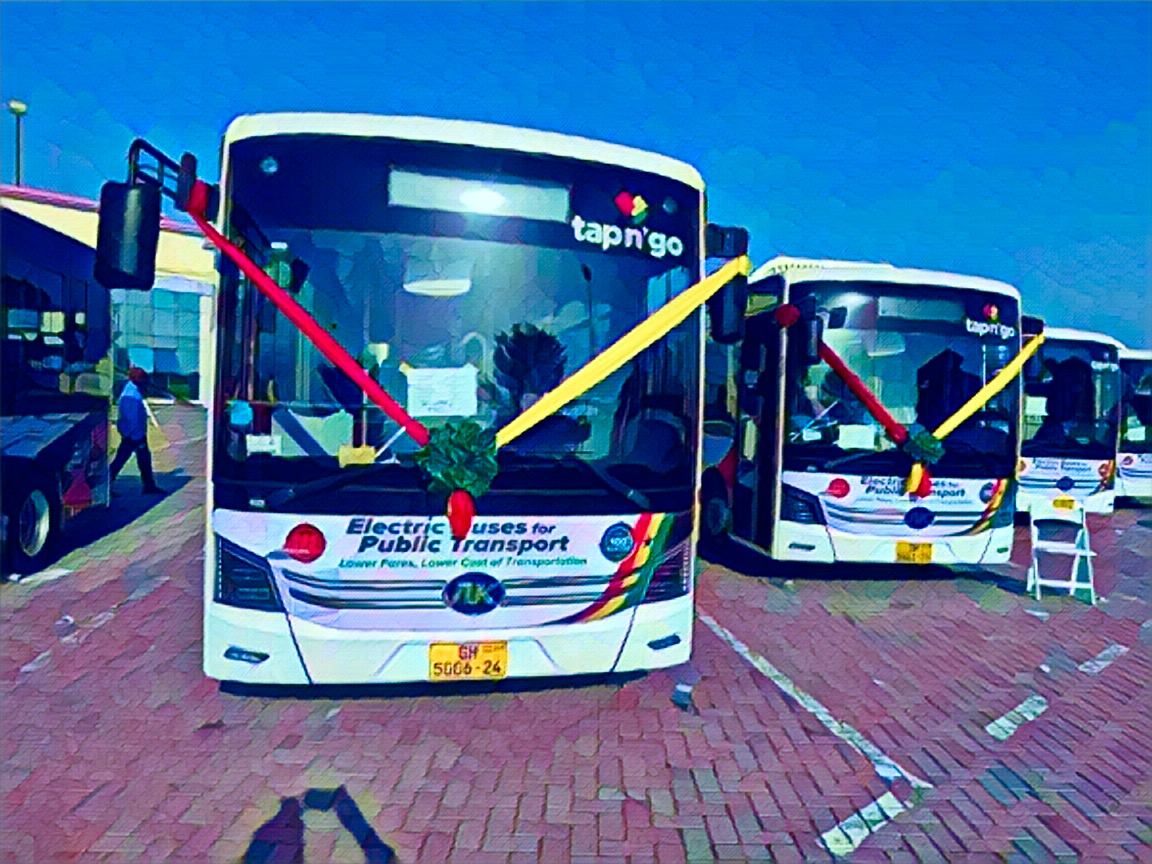Key Points
- The electric buses will reduce transport costs by up to 50%.
- These buses aim to cut greenhouse gas emissions by 70%.
- The buses will create new jobs and improve urban mobility.
In a landmark move toward modernizing its public transportation system and promoting environmental sustainability, Ghana has launched its first fleet of electric buses. The unveiling, led by Vice President Dr. Mahamudu Bawumia in Accra on November 27, 2024, represents a significant milestone in the country’s commitment to greener, more efficient urban mobility.
Speaking at the launch event, Dr. Bawumia emphasized the dual goals of reducing transport costs while creating a model for sustainable urban transport across Ghana and Africa. He said the fleet would cut transportation fares by 40-50% and provide an environmentally friendly alternative to traditional diesel-powered buses.
“This initiative is about more than just buses; it’s about creating a sustainable future for generations to come,” Dr. Bawumia said during the unveiling.
The new electric buses are designed to address multiple challenges facing public transportation in Ghana. From reducing transport fares to lowering greenhouse gas emissions, these buses are poised to transform urban mobility in the country. Here are the key features of the new fleet:
Cost efficiency and affordable fares
The electric buses are set to lower public transport fares by up to 50%. This cost-saving measure will make commuting more affordable, particularly for people living in urban centers, where transportation costs can be a major financial burden.
Environmental impact and sustainability
The buses are a green initiative designed to reduce emissions and improve air quality in cities. The fleet will cut greenhouse gas emissions by as much as 70%, contributing significantly to Ghana’s sustainability goals. This environmental benefit is in line with the country’s broader commitment to combat climate change.
Quieter, healthier cities
In addition to cutting emissions, the electric buses are notably quieter than traditional diesel buses. With significantly reduced noise pollution, the new fleet will contribute to a more pleasant urban environment for residents and commuters alike.
Accessibility for all
The electric buses are designed with inclusivity in mind. They come equipped with wider doors and low-floor ramps, making them fully accessible to people with disabilities, the elderly, and parents with strollers. This focus on accessibility ensures that all citizens, regardless of their mobility challenges, can benefit from the new service.
Timely and reliable service
According to a report by Ghana Web, the new fleet is also expected to improve the reliability of public transportation. With a focus on punctuality, these buses will aim to reduce the common challenges of delays and overcrowding that have plagued Ghana’s public transit system. This is expected to enhance the overall commuter experience, making travel more convenient and less stressful.
Job creation and economic impact
The introduction of electric buses will also generate new employment opportunities. Jobs in vehicle maintenance, charging infrastructure management, and route optimization will provide economic benefits and new employment avenues for Ghanaians, contributing to the country’s overall economic development.
Operational framework and future expansion
The electric buses will be managed in collaboration with Metro Mass Transit Limited (MMTL) and the Greater Accra Passenger Transport Executive (GAPTE). GAPTE will oversee the charging infrastructure and optimize bus routes.
The pilot phase will focus on routes within the Adenta Municipality. Based on the success of the pilot, there are plans to expand the service to other urban areas in the country. The GAPTE Adenta Terminal will serve as the operational hub, with strategically placed charging ports at GAPTE’s headquarters in Adenta Aviation.
This innovative electric bus fleet is a bold step forward in Ghana’s efforts to modernize its transport system while addressing the urgent need for environmental sustainability. As the project progresses, it holds the potential to become a model for green urban mobility across the African continent.




